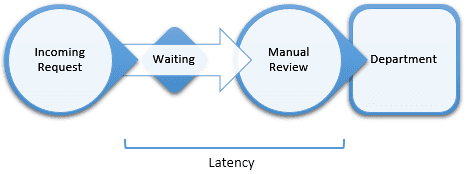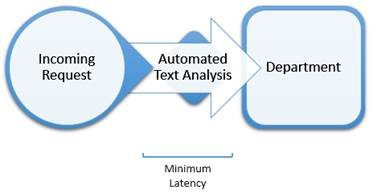Every company is increasing their use of data. In addition to increasing the amount of data they use, companies are looking to reduce the latency from the source system to analysis. This is where real-time analytics comes into play. Real-time analytics, as the name suggests, is time sensitive and enables a decision with as little delay as possible. The incoming data requires immediate analysis and is composed of analyzing data in motion and at rest. This low latency concept is not new, but it is gaining popularity as the scalability of hardware becomes more economical to handle high volumes of data.
So, what can you do with real-time analytics? Instead of trying to list off every example possible (an endless list), let’s jump into one example BlueGranite has recently come across. This example demonstrates how to transform the manual process of reviewing requests into an automated analysis, delivering decisions in real-time.
Problem
The organization has a goal of reducing processing time of the large volume of incoming requests. One of the firm’s bottlenecks is a manual process of directing requests to their respective specialized departments to handle. Implementing a simple yet effective real-time analytical process provides a strategic solution.
Solution
Under the old process, a request would arrive, wait until someone was available, and then that individual would take the time to read through the request statements. After processing the information, the individual would decide on what department should handle the request.
Under the new process, a request will arrive and immediately a text analysis function consumes the request statements, then classifies which department handles the request.
Benefits
Two of the major benefits from implementing such a strategy addresses the organization’s goal of reducing processing time. One benefit is reducing the time spent deciding where to send the request. In more tangible terms, the process to review an incoming request was expected to take around 15 minutes or less. The text analysis function only takes a second to run, providing reliable time savings. In addition to the reduced review time, more resources can be spent handling the request rather than deciding which department needs to review the request.
Another major benefit is reducing the overall latency time from the request to the department. Any surge of requests could flood the system under the old process requiring manual direction. In return, this would cause delays before the departments could even start processing the requests. By using text analytics in real-time, the hardware can be scaled appropriately to handle any flood of requests and reduce the latency time by automatically executing at the arrival of a request.
Getting Started
The components in this system design can be kept at a minimum to maintain a simple and effective solution. One way is to take advantage of SQL Server R Services by using SQL 2016. This allows for a set of R commands to be encapsulated in a stored procedure to be executed immediately, as needs arise. In this example, R commands use a trained SVM model which consumes the request statements to determine the most suitable department alongside the probability or confidence in the classification.
To learn more about how BlueGranite can help move your analytics into real-time, contact us today!







